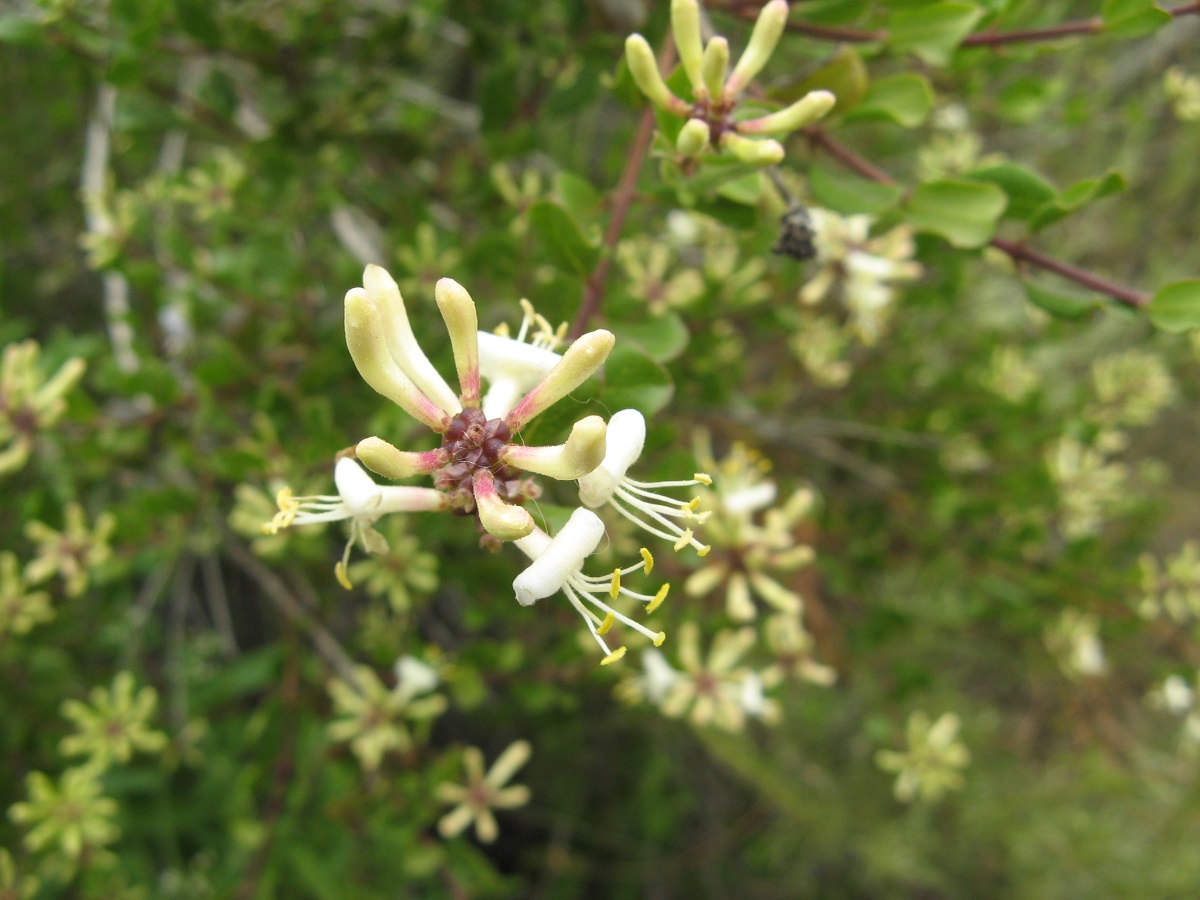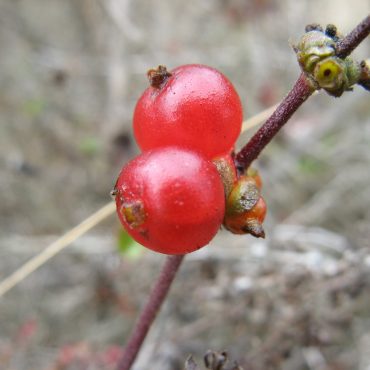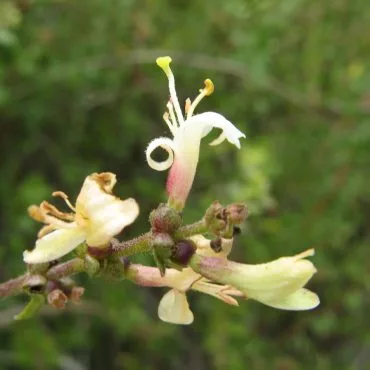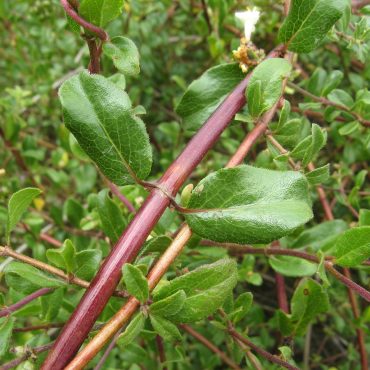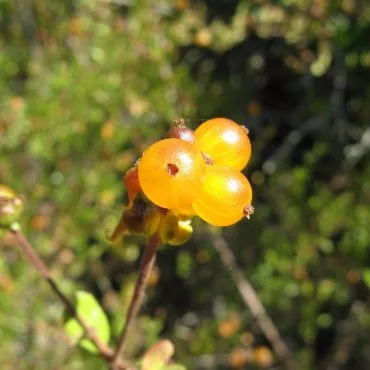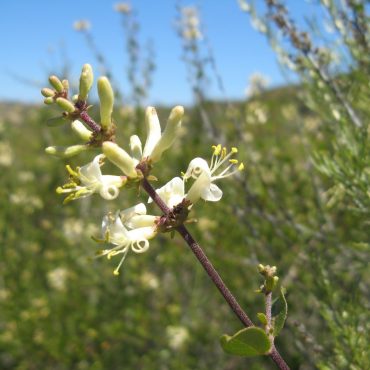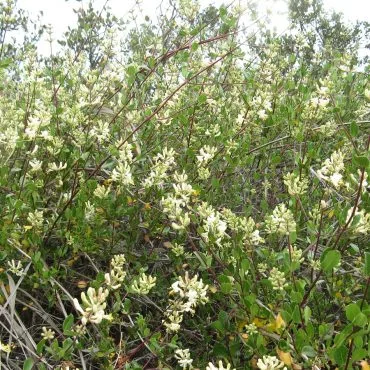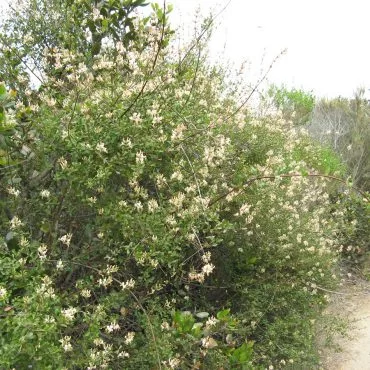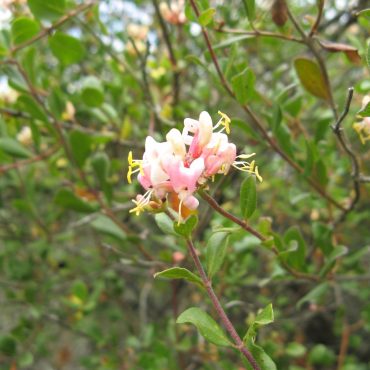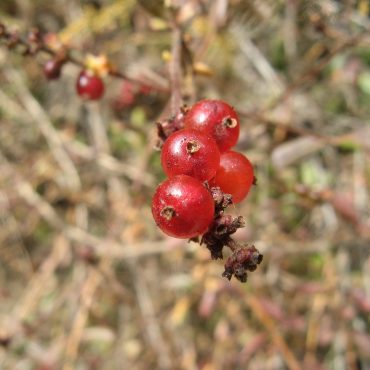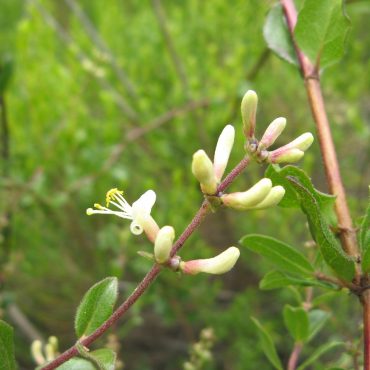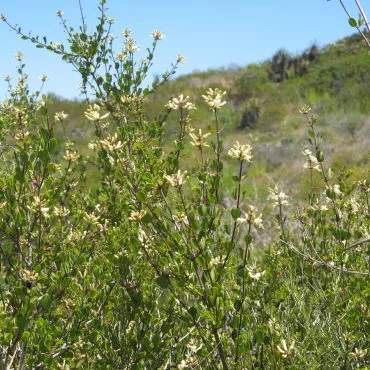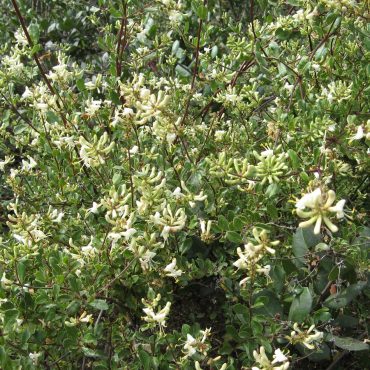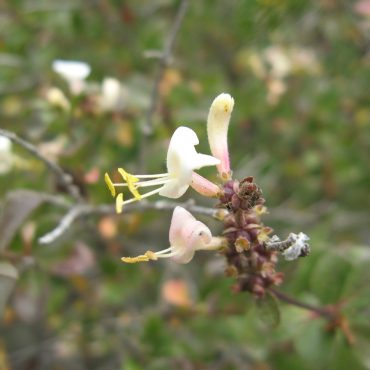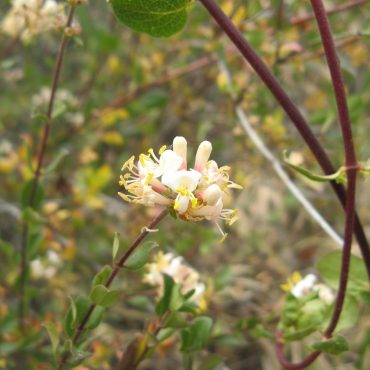Description
2,4,26,59
Southern honeysuckle is a woody, perennial vine that grows up through shrubs in the chaparral and sage scrub. It is evergreen or semi-deciduous. Arching, reddish stems may be up to eight feet (2.5 m) in length, and they gain altitude by leaning and sprawling rather than twining or clasping. Leaves are elliptic to ovate; their width is more than half the length. Older leaves may be up to 1.75″ (4.5 cm) long. The upper surface is dark green, somewhat glossy; the lower surface is paler. The leaf surface is often undulate, and margins are smooth, sometimes rolled under, especially during periods of drought. Leaves have short petioles and occur in pairs on opposite sides of the stem.
Flowers are born on short spikes from tips of branches. There are several flowers at discrete nodes; flowers of one node open on different days but stay open for several days. The small calyx is green and five-lobed. Flowers are bisexual, cream-colored, sometimes tinged with pink. The corolla is bilaterally symmetrical, tubular with two lips; the upper lip is four-lobed and rolls upward and backward; the lower lip curls down. The five stamens have white filaments and bright yellow anthers and protrude from the corolla. There is one pistil; the style and stigma are often exserted beyond the anthers. The ovary is inferior. Flowers have been described as very fragrant11,23 or not fragrant at all.4 In our plants, the fragrance is subtle, if not imaginary. Flowers appear primarily in April and May and may continue into July.1
The attractive, translucent, spherical berries are orange or red, about 1/4 – 1/3 inch across (6-8 mm). Each berry contains one to five small seeds. Although the petals drop soon after fertilization, the calyx persists, sitting on the top of the berry-like a small crown.


